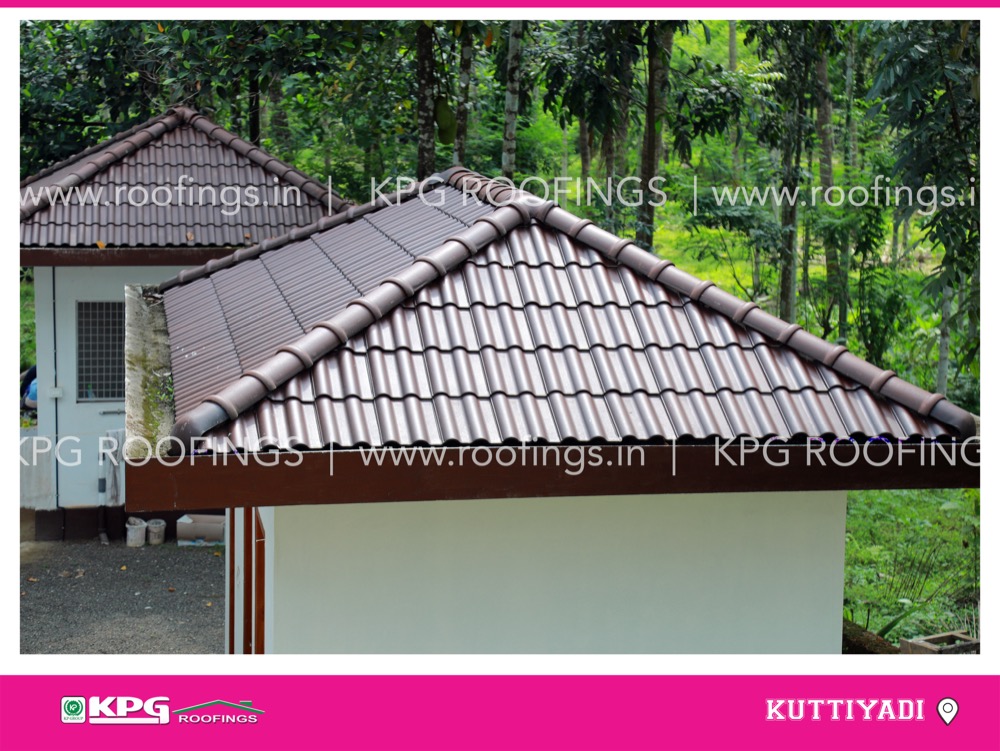KPG, a leader in the roofing industry, proudly presents its line of Made in India Ceramic Roof Tiles. These tiles are designed with precision and crafted to perfection, combining tradition with modern technology. As India continues to grow as a manufacturing hub, KPG embraces the “Make in India” initiative, ensuring top-notch quality while supporting the local economy.

These tiles are made in morbi and made from fine extracted clay from rajasthan. These clay are processed and vitrified to make the roof tiles
Features of KPG Ceramic Roof Tiles
1. Durability and Strength
KPG ceramic roof tiles are designed to withstand harsh weather conditions. Whether it’s heavy rainfall, extreme heat, or cold temperatures, these tiles are engineered to offer lasting protection and durability. Made from high-quality clay and fired at high temperatures, they are resistant to cracking and breaking, ensuring long-term performance.
2. Aesthetic Appeal
Available in a wide range of colors and finishes, KPG’s ceramic tiles add a touch of elegance to any building. From traditional terracotta hues to more modern tones, these tiles enhance the architectural beauty of homes, commercial spaces, and heritage structures alike.
3. Environmental Sustainability
KPG ceramic roof tiles are made from natural clay, making them an eco-friendly roofing option. The manufacturing process adheres to environmentally sustainable practices, minimizing carbon footprints while delivering superior products. Furthermore, ceramic tiles offer excellent thermal insulation, reducing energy consumption by keeping interiors cooler in summer and warmer in winter.
4. Weather Resistance
Thanks to advanced technology, KPG ceramic roof tiles are resistant to UV radiation, moisture, and fire. This makes them a versatile choice for various climates, including coastal areas where humidity and salt exposure can cause roofing materials to deteriorate.
5. Low Maintenance
Once installed, ceramic tiles require minimal maintenance. Their non-porous surface prevents the accumulation of moss and mildew, and they retain their vibrant color for decades without the need for repainting.
Why Choose KPG Ceramic Roof Tiles?

1. Made in India Excellence
KPG is committed to supporting the “Make in India” movement, ensuring that all tiles are manufactured locally, reducing import costs, and enhancing product availability. The company’s expertise in crafting ceramic roof tiles ensures that customers receive products that meet the highest international standards.
2. Cost-Effective Solution
Despite their premium quality, KPG ceramic roof tiles offer competitive pricing. The long lifespan and minimal maintenance costs make them a cost-effective roofing solution compared to other materials.
Due to local manufacturing, The roof tiles price will not be affected by the frequent changes in the shipping costs. The imported tiles will have difference in their cost according to the dollar and shipping charge value.
3. Customization and Versatility
Whether you are building a new home or renovating an existing structure, KPG ceramic roof tiles can be customized to suit your specific requirements. Their versatility in terms of design, color, and installation makes them a preferred choice for architects and builders across India.
Applications of KPG Ceramic Roof Tiles
1. Residential Projects
KPG ceramic tiles are perfect for residential buildings, offering durability and a wide range of design choices. Whether you’re looking to build a contemporary home or a traditional villa, these tiles add aesthetic appeal and functional benefits.
2. Commercial and Public Buildings
For commercial properties, KPG ceramic tiles provide an excellent roofing solution, combining aesthetic appeal with the durability required to withstand heavy usage and public exposure.
3. Heritage Restoration Projects
For projects that require the restoration of historical buildings, KPG’s ceramic roof tiles offer an authentic and high-quality replacement. These tiles maintain the heritage look while meeting modern standards of durability and safety.
Installation of KPG Ceramic Roof Tiles
The installation process of KPG ceramic roof tiles is straightforward and quick. Their lightweight design ensures ease of handling and installation, reducing labor costs and time. This can be installed by screwing or nailing.
KPG also provides expert guidance to ensure that the tiles are installed correctly, maximizing their lifespan and performance.
You can read about installation here.
Customer Support and After-Sales Service
KPG not only delivers high-quality products but also ensures excellent customer support and after-sales service. From helping you choose the right tiles to offering guidance during installation, KPG is committed to providing a seamless experience for every customer.
Conclusion
KPG’s Made in India Ceramic Roof Tiles stand as a testament to the company’s dedication to quality, sustainability, and customer satisfaction. With their blend of durability, aesthetic appeal, and cost-effectiveness, these tiles are an ideal roofing solution for a wide range of applications. As India continues to embrace locally manufactured products, KPG’s ceramic tiles are set to be a leader in the roofing industry, offering unparalleled value and performance.
Whether you are building a new structure or renovating an old one, consider KPG Ceramic Roof Tiles for a roofing solution that is built to last and designed to impress.

 Facebook
Facebook Twitter
Twitter Google +
Google + Instagram
Instagram Message Me
Message Me






